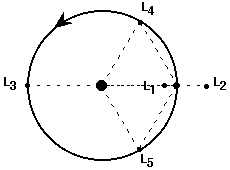A
B
C
D
E
F
G
H
I
J
K
L

M
N
O
P
Q
R
RL = 2.456*R*(p'/p)^(1/3)
where p' is the density of the planet, p is the density of the moon, and R is the radius of the planet. (more)
The New Solar System
Summarizes what we've learned from interplanetary explorations in the last 25 years. My primary reference for The Nine Planets.
Encyclopedia of the Solar System
A more scholarly introduction the planetary science for those who want to dig a little deeper.
The Compact NASA Atlas of the Solar System
This 'road map' of the solar system contains lots of maps and data as well as photos.
Touring the
Universe through Binoculars
A personal tour of the universe using nothing more than a pair of binoculars.

RL = 2.456*R*(p'/p)^(1/3)
where p' is the density of the planet, p is the density of the moon, and R is the radius of the planet. (more)